Introduction: The Myth of the Machine Doctor
Walk into a hospital ward and you will notice something striking: patients and families rarely look at the monitors first. Their eyes search for the doctor. They wait for words, expressions, and gestures that may confirm hope or deepen fear. In those moments, the doctor is expected to be steady, rational, and certain.
Society has long cultivated the myth of the machine doctor—a figure who does not hesitate, does not break, and does not falter. The white coat is imagined as armor against both disease and emotion. Doctors are supposed to know, to decide, and to act—swiftly and correctly.
But behind the myth lies a quieter truth. Physicians wake at 3 a.m., haunted by doubts about a missed lab test. They carry the memory of patients who died unexpectedly, replaying the sequence of decisions like a film that refuses to end. They cry in bathrooms after telling a family that nothing more can be done. They fall sick themselves, waiting on reports with the same anxiety their patients feel.
The physician is human. To forget this is to distort medicine. To reclaim it is to restore healing to its rightful place—not just in bodies but in relationships.
1. The Doctor’s Vulnerability
Every physician eventually confronts their own body. I once sat across from a colleague—a brilliant cardiologist—as he nervously fiddled with his ECG report. He had discovered arrhythmias in his own rhythm, the kind he had diagnosed in hundreds of others. “It feels different when it’s my own heart,” he whispered.
Doctors experience illness as a double exposure: the medical knowledge that outlines risks and complications and the personal fear that magnifies them. A patient may say, “Doctor, tell me honestly, how bad is this?” The physician-patient knows too much—every possible complication, every grim statistic—and honesty becomes an inner torment.
Medicine trains us to cover vulnerability with detachment. A surgeon operates hours after learning of his father’s cancer. A resident counsels patients on sleep hygiene while surviving on three hours of rest. A physician prescribes exercise, though her knees ache every morning.
Yet it is vulnerability that anchors empathy. Doctors who have themselves faced illness listen differently. They pause longer when a patient says, “I am scared.” They know the texture of fear. They recognize that reassurance is not a line in a protocol but a bridge of presence.
2. The Hidden Curriculum of Detachment
Medical education is as much about silence as it is about instruction. While textbooks teach the language of disease, the wards teach another, unspoken language—the hidden curriculum.
On my first clinical posting, I saw a resident walk quickly away from a patient’s family who was crying. Later, he said to me, “If you stop every time, you won’t survive. Don’t get too involved.” That phrase, “Don’t get too involved,” is passed down like a survival mantra.
The hidden curriculum teaches us to detach:
• Do not cry in front of patients.
• Do not show your exhaustion.
• Do not let uncertainty slip into your voice.
It is a coping strategy, but it comes at a cost. When doctors learn to suppress emotion, they risk suppressing their humanity. Over time, patients become cases, not people. Death becomes “an outcome,” not a tragedy.
But detachment is not the only way to survive. Studies show that physicians who cultivate empathy—who connect, even at emotional cost—report higher meaning in their work and often less burnout. What drains us is not connection but isolation: the loneliness of pretending to be invulnerable.
3. Stories That Heal
Medicine is a science of facts, but healing is a practice of stories.
A woman once came to my clinic complaining of persistent headaches. The MRI was normal, the labs unremarkable. As I began my usual neurological checklist, she interrupted: “Doctor, ever since my husband passed, it just doesn’t stop.” The headache was less a symptom than a sentence in her ongoing story of grief.
If I had stayed within the biomedical checklist, I might have increased her analgesics. By listening to her story, I understood that what she needed was time, counseling, and acknowledgment that grief has a body.
Patients rarely come with “symptoms” alone; they come with disruptions—of identity, of roles, of futures imagined. The HumanDoc listens for the story beneath the symptom.
And stories are reciprocal. When physicians share fragments of their own struggles— “I also know what it is to feel helpless”—they transform the consultation from transaction to relationship. Stories are not just information; they are medicine.
4. When Doctors Cry
One of the most powerful moments of my residency was not a technical procedure but a human breakdown. A young boy died of fulminant sepsis despite aggressive treatment. The consultant, a senior pediatrician, walked out, sat on a bench, and wept.
We, the juniors, stood awkwardly. We had never seen a senior cry. Later, the boy’s parents approached him. Instead of blame, they placed a hand on his shoulder: “You did all you could. Thank you for trying.”
That day, I understood something rarely taught: crying is not unprofessional. It is profoundly human. When a physician cries with a patient, they do not weaken trust; they deepen it. Tears acknowledge that medicine is not merely about bodies but about bonds.
Yet doctors often hide their tears—in corridors, bathrooms, and cars. We fear loss of authority. But authority built on distance is fragile. Authority built on shared humanity is resilient.
5. The Reciprocity of Healing
Patients heal doctors.
A man with advanced cancer once told me, “Doctor, I don’t fear dying. I fear leaving my daughter unprepared.” His calmness in the face of death stayed with me long after his passing.
Another patient, struggling with chronic pain, laughed through every consultation. “If I stop laughing, pain wins,” she said. Her defiance became a lesson I carry into my own struggles.
Physicians often imagine themselves as givers, providers of knowledge and treatment. But in truth, healing is reciprocal. Patients shape us—in humility, patience, and resilience. Every consultation is a quiet exchange: while we treat bodies, they remind us of the essence of living.
6. Toward a New Model of Doctoring
If physicians are human, medicine must embrace that humanity, not deny it.
• Training: Medical schools should integrate narrative medicine, reflective writing, and sessions on emotional literacy. Students must learn that tears and doubts are not shameful but real.
• Practice: Consultations should allow space for silence, for listening without rushing. Healing happens in pauses, not just prescriptions.
• Culture: Institutions must normalize vulnerability—creating safe spaces for doctors to admit uncertainty, grief, or fatigue.
• Policy: Healthcare systems should value time spent with patients, not just procedures. Listening should count as labor, empathy as expertise.
A new model of doctoring is not a soft alternative; it is a survival necessity. Without it, physicians will continue to burn out, patients will continue to feel unseen, and the myth of the machine doctor will fracture under the weight of reality.
Conclusion: Remembering the Doctor as Human
Doctors are not gods, nor are they machines. They are human beings—fragile yet resilient, knowledgeable yet sometimes uncertain, compassionate yet also vulnerable to pain. They fall sick, they grieve, they tire, and they worry—just like everyone else.
When you see a doctor, you often see confidence in their eyes. But behind it may lie sleepless nights, doubts about a patient they lost, or the quiet weight of responsibility that never fully leaves them. The white coat does not erase fear or sadness; it only hides it.
What makes a doctor special is not that they are perfect, but that they keep showing up—day after day, night after night—to care for others, even when they themselves are hurting.
So, the next time you meet your doctor, remember: behind the stethoscope is a human being with a beating heart, with struggles and dreams, with limits and hopes. Treat them with the same kindness and patience you would offer a loved one.
In that mutual recognition—patient and doctor seeing each other as human—healing becomes complete. For medicine is not only about curing disease; it is about sustaining humanity on both sides of the consultation table.
A Note for Patients and Families
Your doctor is human too.
They may look confident, but they carry the same worries you do. They too wait for test results with anxious hearts. They too cry when someone they cared for doesn’t make it. They too get tired, fall sick, and feel fear.
Doctors are not machines in white coats. They are people—just like you.
And when we meet each other with patience and kindness, something remarkable happens: healing flows both ways. You heal a little, and your doctor heals a little too.
So next time, when you see your doctor, remember: the stethoscope rests on a heart that beats just like yours.
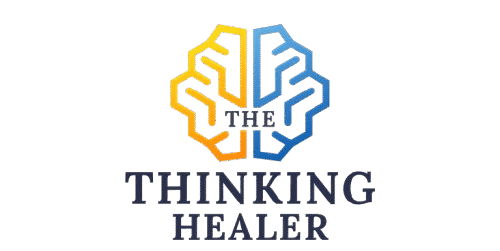
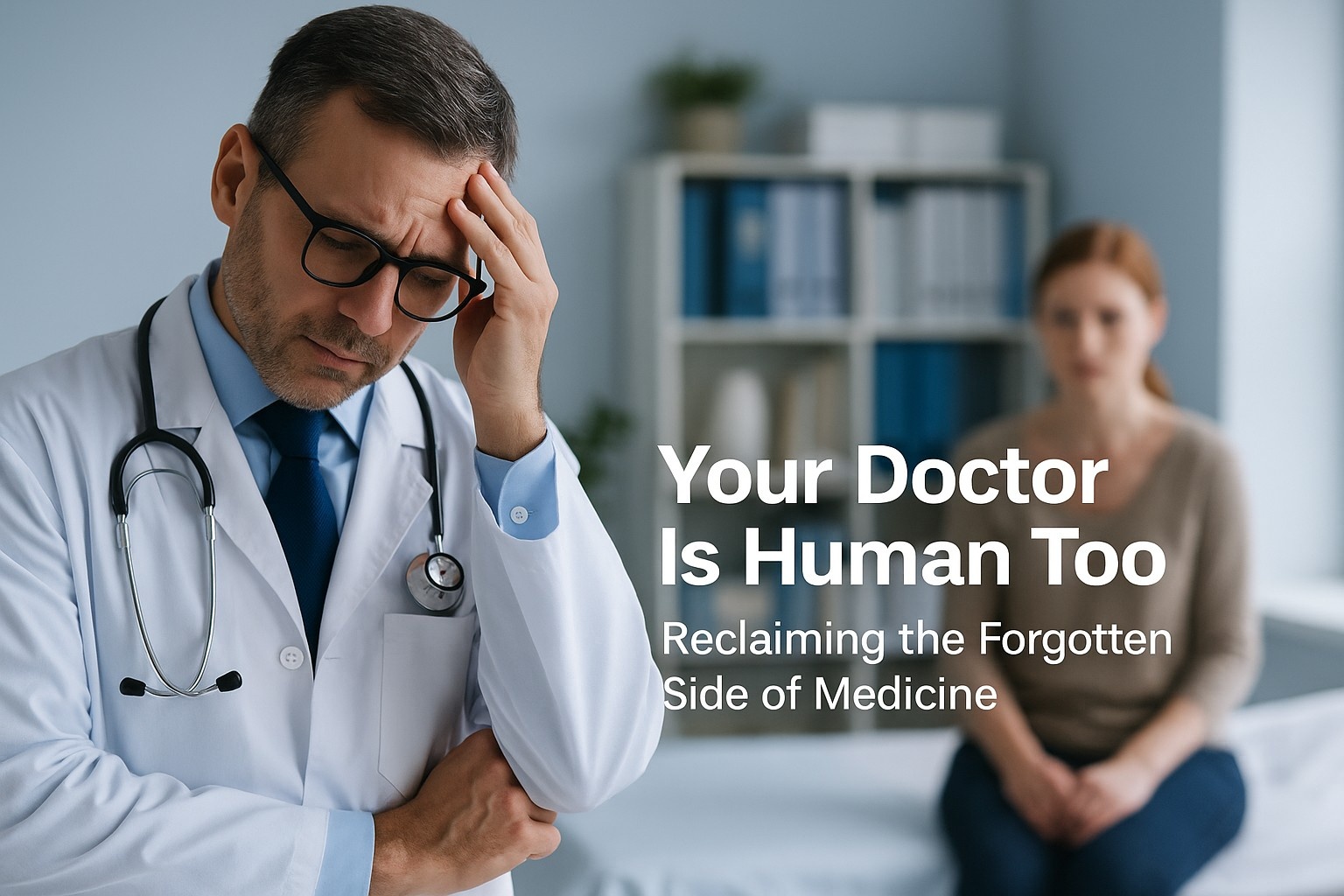
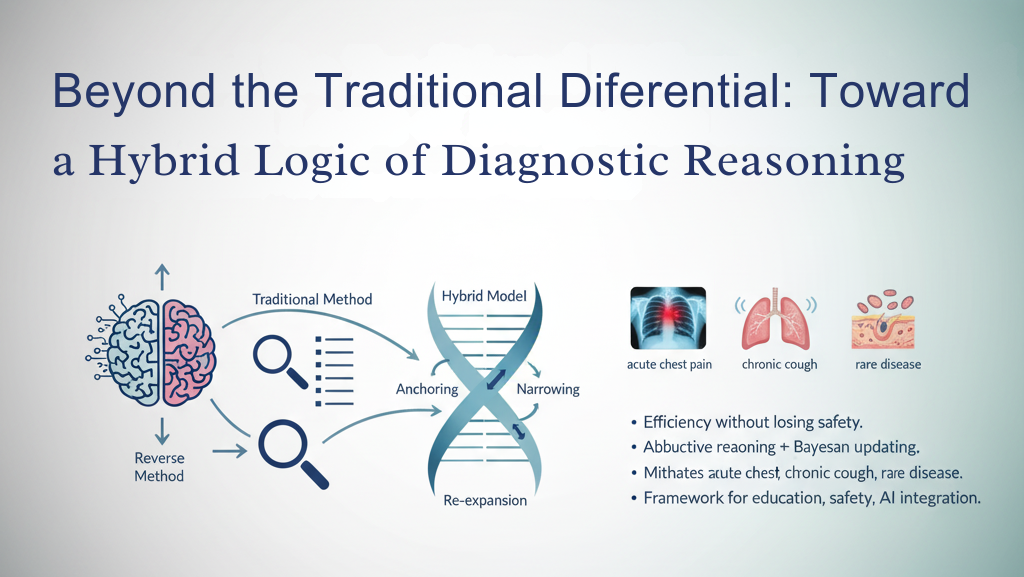
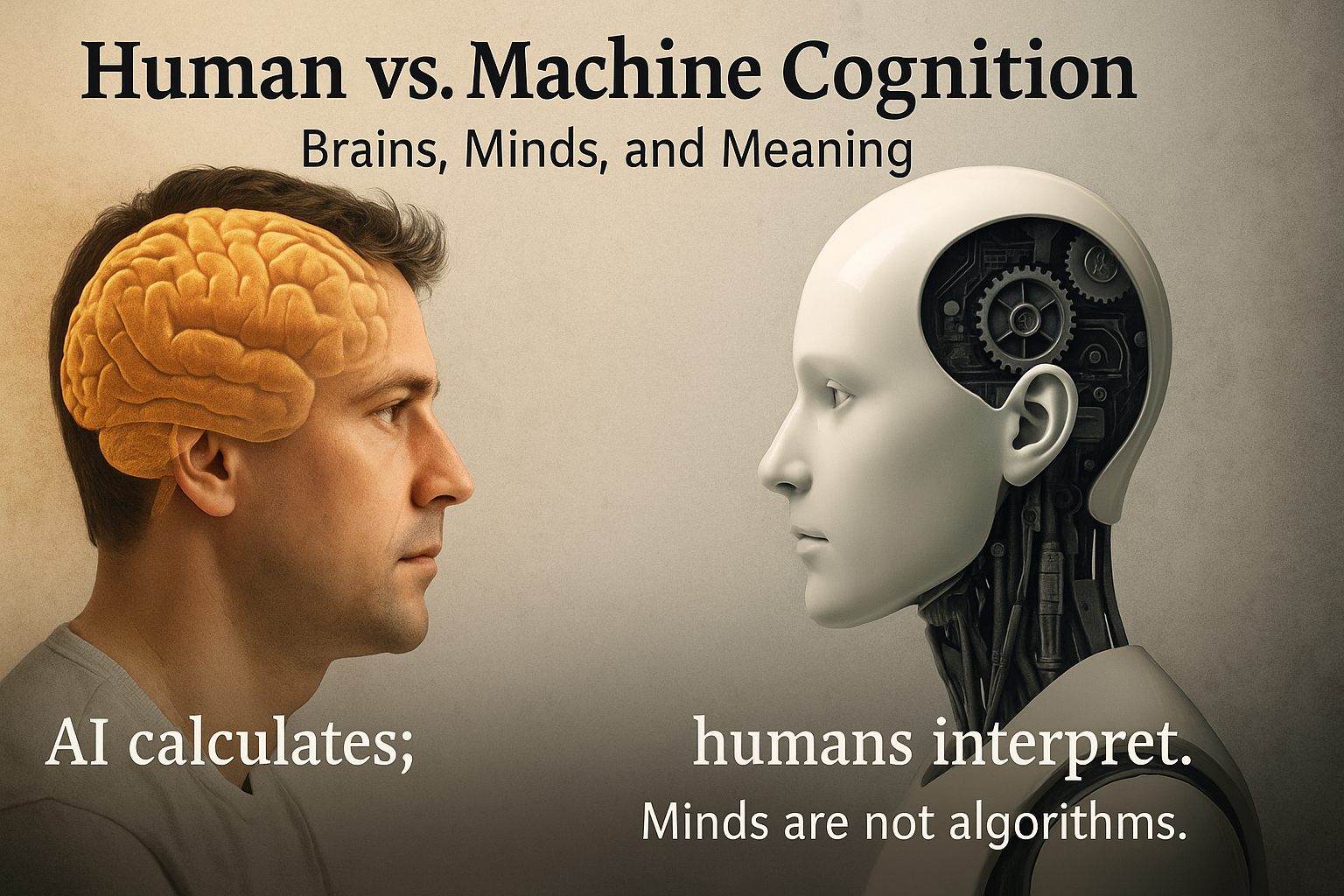
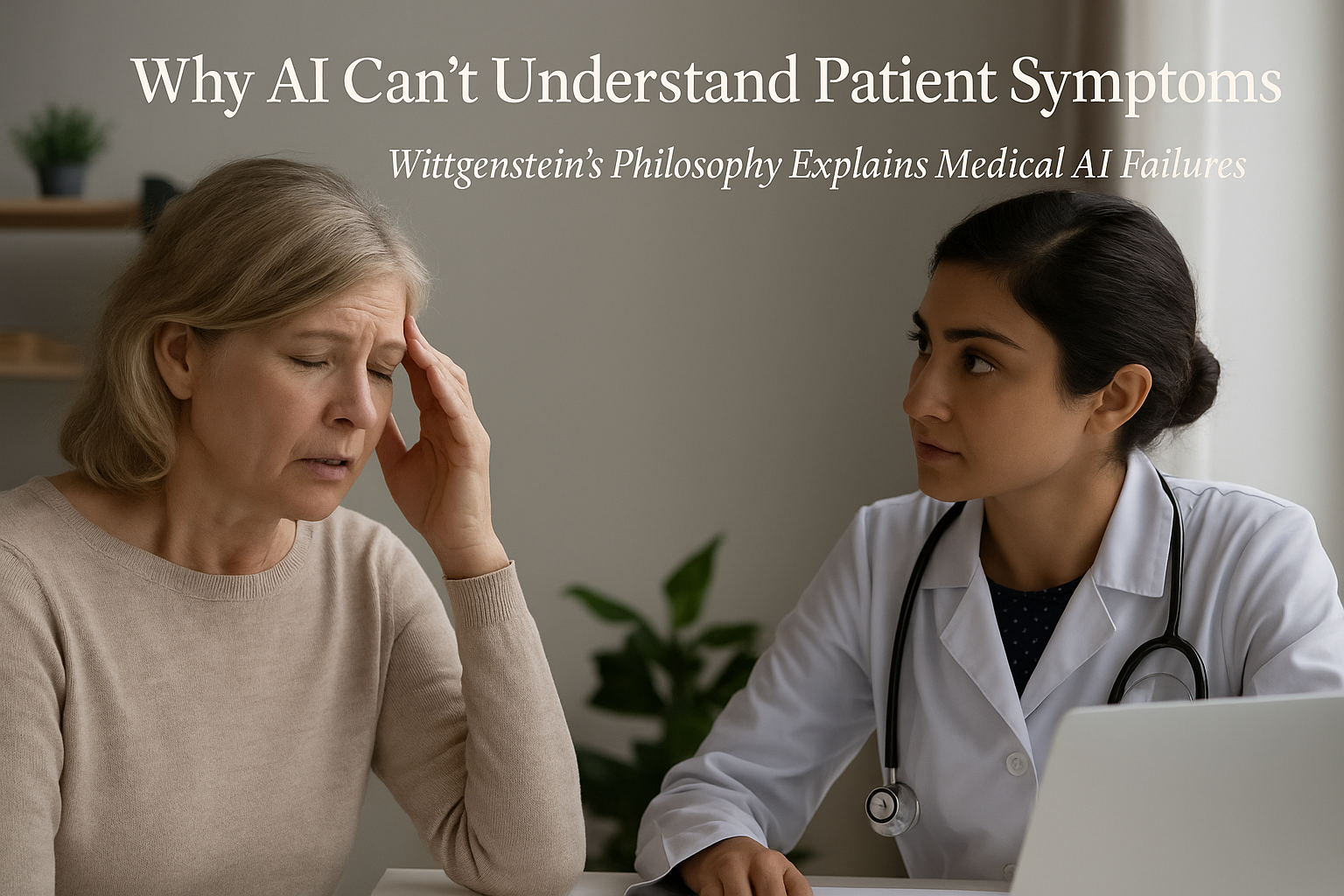
Leave a Reply